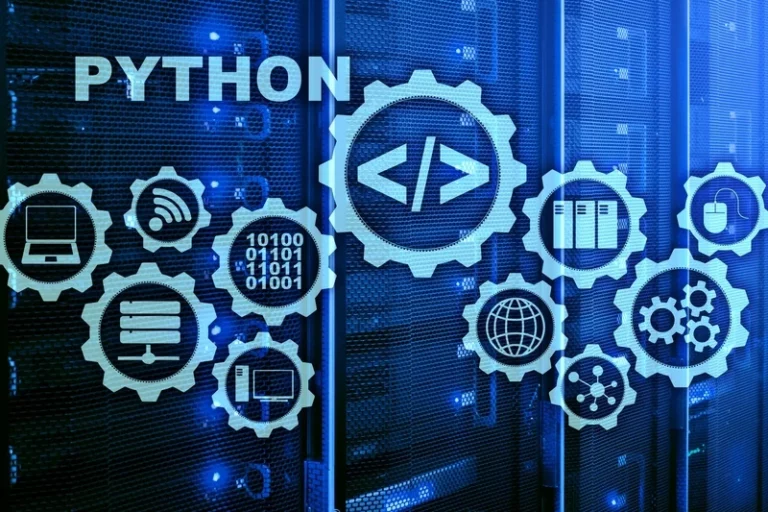Piaget believed that all children try to strike a balance between assimilation and accommodation using a mechanism he called equilibration. Equilibration helps explain how children can move from one stage of thought to the next. A schema describes both the mental and physical actions involved in understanding and knowing. Schemas are categories of knowledge that help us to interpret and understand the world. Piaget suggested several factors that influence how children learn and grow. Children become much more skilled at pretend play during this stage of development, yet they continue to think very concretely about the world around them.

This is where it’s important to level with individual contributors and truly get to know what’s going on. This is a great time to reflect on what makes a high-performing team able to accomplish tasks and move through obstacles. As you build a new team, keep the stages of team development in mind so you can help individual team members reach their full potential and collaborate together effectively. While there’s no one right way to support your team, try these four strategies to boost your team’s cohesiveness. As a team lead, it’s your goal to get your team to this stage as quickly as possible.
The 5 stages of group development
Last but not least, the Adjourning Stage — often called the Mourning Stage for obvious reasons — ends the whole project cycle. Depending on the leader of the group, the Adjourning Stage can either be a leeway into future endeavors or it could impact future collaboration. Since the Storming Stage can be infused with power struggles, I sat down with a leadership coach, Alexis Haselberger, to dive deeper.

The adjournment stage is becoming even more frequent with the advent of flexible organizations, which feature temporary groups. Many theories of group development hold that these types of conflicts and tensions over authority and status are essential for the emergence of genuine cohesion and cooperation. In order to progress to the next stage, group members must move from a “testing and proving” mentality to a problem-solving mentality. The therapist’s role at this stage is to reaffirm the group’s purpose and members’ common goals. Group rules and expectations are reinfused and the therapist encourages group cohesion and interpersonal learning among the members. The therapist elicits the expression of negative affect and assists members to identify and resolve conflict.
Schemas
The team members will therefore resolve their differences and members will be able to participate with one another more comfortably. The ideal is that they will not feel that they are being judged, and will therefore share their opinions and views. Following the https://www.globalcloudteam.com/ team’s forming, the storming stage of group development takes place. Also called the power struggle phase, group members often experience conflict and competition between one another as ideas are formulated and methods of performing a task are disagreed upon.
One of the leaders proposes that the group goes out to dinner to celebrate their success, in addition to offering a time of group reflection before they are permanently disbanded. Many group members are disappointed that the group must dissolve, but they recognize 4 stages of group development and commend other group members for the skills both personally developed and those developed as a team. In our example, the marketing team reached an agreement and restructured the roles of its members during the norming phase of group development.
Storming Stage tips
The worker helps to improve the interpersonal interactions by introducing a number of ice breaking, role-playing, modelling, and simulation exercises. At the environmental level worker connects the members with resources, creates congenial physical and social environment. Stefan Veljkovic is a work optimization aficionado who writes at the intersection of tech, self-help, and mindfulness. With a long-lasting career in editing, writing, and translation, he thinks of himself as a word-lover. As a productivity author and researcher, Stefan has crafted countless articles on improving habits and soft skills.
- In later stages, word puzzles, problem-solving tasks, and logic puzzles help children’s cognitive development.
- In any case, it’s the saddest of all the 5 stages of group development.
- This is demonstrated through high morale, productivity and engagement.
- It is also easy to look at each stage of Erikson’s theory and consider how it can apply to your life.
It’s divided into 5 stages – forming, storming, norming, performing, and adjourning. One major weakness of psychosocial theory is that the exact mechanisms for resolving conflicts and moving from one stage to the next are not well described or developed. The theory fails to detail exactly what type of experiences are necessary at each stage in order to successfully resolve the conflicts and move to the next stage. The major theme of the third stage of psychosocial development is that children need to begin asserting control and power over the environment. Children who try to exert too much power experience disapproval, resulting in a sense of guilt.
Schema
They do not know what type of persons are the worker and other members. Open groups are those groups where there are no restrictions of time to join the group i.e. a person can join the group anytime during his/her life. Whereas, in close group, members are invited only for a defined time period after expiry of such time, ‘enrollment for it stops. So, it is very important for group workers to properly decide the composition, nature of group and to have it either closed or opened group. Clockify is a time tracker and timesheet app that lets you track work hours across projects.
Group members may have a hard time working with other groups as they had strong group dynamics with their previous team. Therefore, the termination of the group may be scheduled or unscheduled. To make things more tangible, here’s a quick overview of the behaviors, feelings, group needs, and leadership needs in the Performing Stage. In turn, the level of effectiveness reaches its peak in the Performing Stage, when team members use well-oiled workflows and communicate feedback effectively to make the project smooth sailing. At this stage, the group therapist’s interventions aim to maintain a balance between support and confrontation. The primary role is to facilitate the working process around feedback, promoting insight and encouraging problem solving in an ongoing manner.
Help your team reach their goals with strong leadership
Kids in the concrete operational stage also begin to understand that their thoughts are unique to them and that not everyone else necessarily shares their thoughts, feelings, and opinions. Because of individual differences, different members may experience varying degree of tension and anxiety out of this interaction pattern. The team leader takes the role of the curator, stepping aside and giving more freedom of action to the team. At this stage, the team negotiates and makes decisions among themselves. Researchers have found evidence supporting Erikson’s ideas about identity and have further identified different sub-stages of identity formation. Some research also suggests that people who form strong personal identities during adolescence are better capable of forming intimate relationships during early adulthood.

Piaget believed that children take an active role in the learning process, acting much like little scientists as they perform experiments, make observations, and learn about the world. As kids interact with the world around them, they continually add new knowledge, build upon existing knowledge, and adapt previously held ideas to accommodate new information. Piaget believed children move at their own pace through the stages of cognitive development. Now you know more about the forming, storming, norming, performing, and adjourning activities, you’re almost ready to get your team together. However, before you start, let us share some useful tips so that the process will go smoothly. Children who struggle and who are shamed for their accidents may be left without a sense of personal control.
Guide on how to hire software development team for your project
A child at the formal operational stage can think of numerous ways of solving a single problem, then choose the best option based on how logical or successful it is likely to be. They should be avoided at all costs, and that’s why the norming step should be carefully monitored for this kind of behavior. Each member should be recognized for their role and appreciated for it regularly to help counteract this.